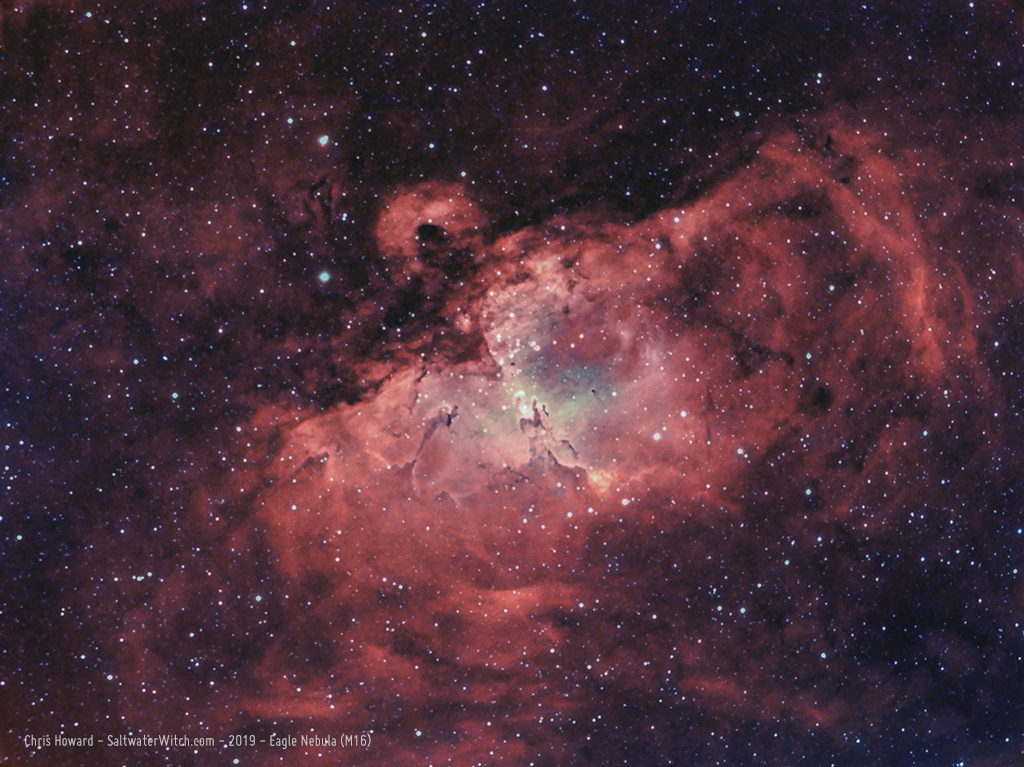Lion's Mane in Cepheus
Work-in-progress for Sh 2-132 "Lion's Mane" emission nebula on the border between Cepheus and Lacerta, about 10,000 lightyears away, and over 300 lightyears in diameter. This is why Cepheus is such a wonderful constellation. The Lion's Mane is another giant HII region with ionization partially provided by two Wolf-Rayet stars, WR 152 and WR 153, which have blown out the rings you see in the image. I'm in the middle of capturing data for this. This is a fairly dim object--I only have about half the frames I want for Ha and OIII, and I haven't even started SII capture yet. Here's a bi-color Ha+OIII for the subs I've captured so far. William Optics GT81 APO refractor, ZWO ASI1600MM-Pro mono camera, Astronomik filters, iOptron CEM25P mount.
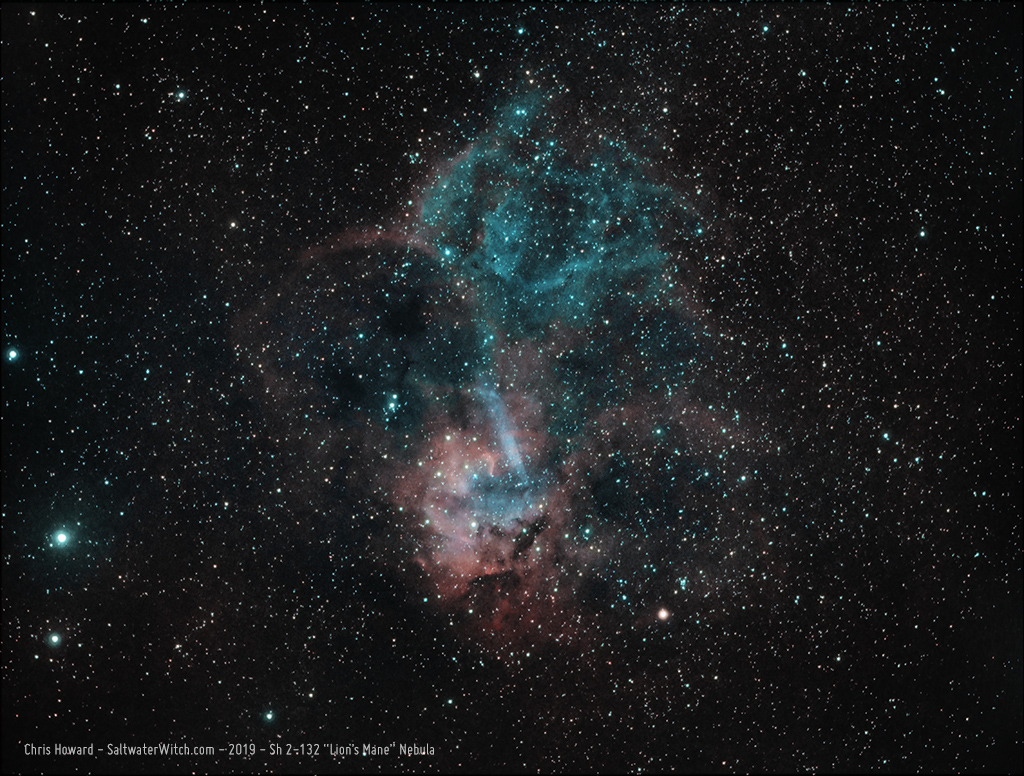
Posted July 5, 2019
Lobster Claw Nebula in Ha + OIII
The "Lobster Claw Nebula" (Sh 2-157), an emission nebula in Cassiopeia, and Sh 2-157a a ring nebula around the Wolf-Rayet star WR 157. I finally captured hydrogen-alpha and oxygen-3 frames for one of my favorite Sharpless catalogue objects. I will come back later in the year to get better OIII frames and an SII set. I didn't get to the underside of Cepheus--or the borderlands between Cepheus and Cassiopeia until 1:30 am, and by then I only had an hour and a half of astronomical night left. This time of year the sky begins brightening at 3:30am, which makes it tough to get to some of these later objects.

Posted July 3, 2019
Elephant Trunk Nebula
I hung around Cepheus and shot several hours of sub-exposures last night, mostly focused on IC 1396, the "Elephant Trunk Nebula", which is easy to make out near the center of the frame. This giant ionized gas region in Cepheus has some amazing dark bands of dust and other interstellar debris, blocking the light of more distant stars. Like there's that little guy on the right I want to call the "Harry Potter casts an Imperio" nebula. Imaging notes: bi-color made up of 48 stacked subs in Ha and OIII, William Optics GT81 APO refractor, ZWO ASI1600MM-Pro mono camera, Astronomik filters, iOptron CEM25P mount.
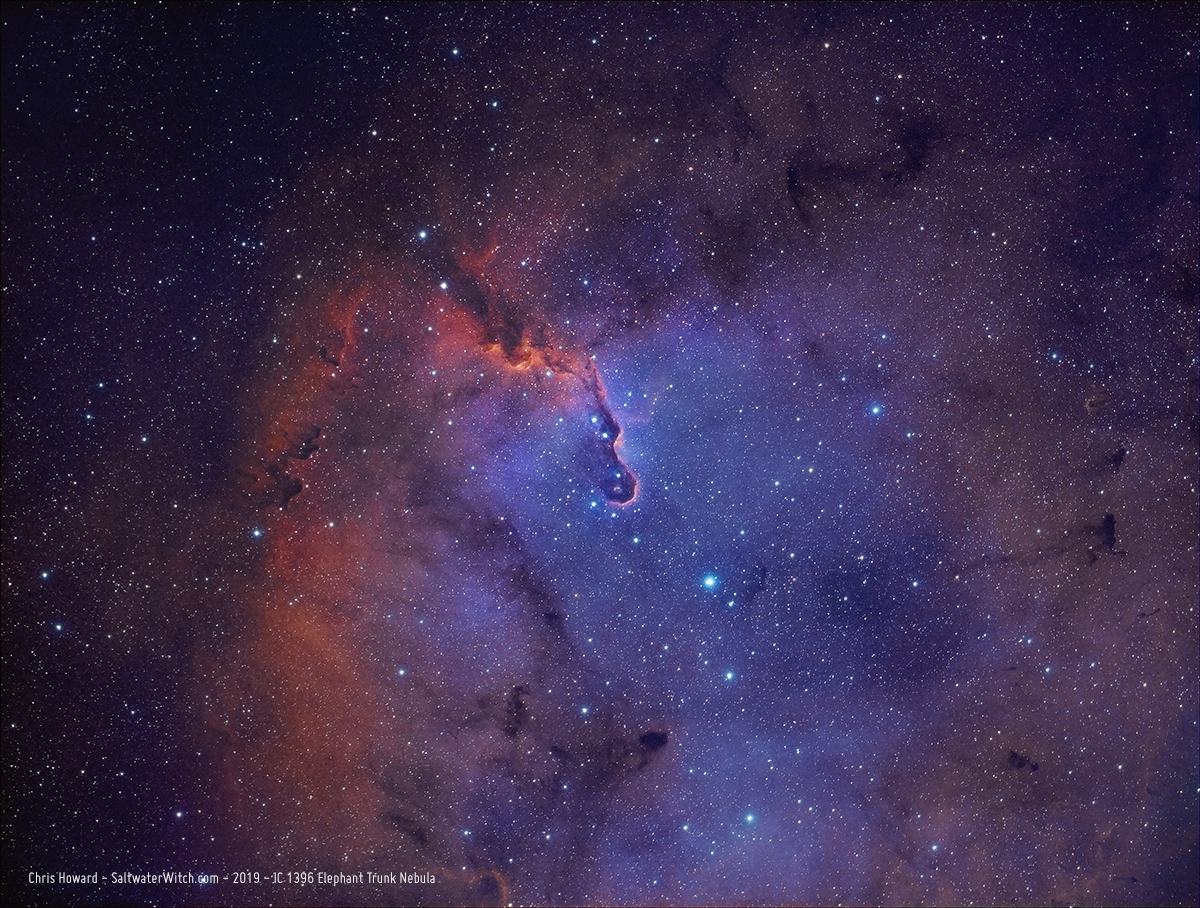

I also shot RGB subs. Here's the HaRBG:

Posted July 3, 2019
Rosette Nebula
The Rosette Nebula (NGC 2237 et. al.) from my backyard. 28 x 240 secs Ha, 26 x 240 secs OIII. William Optics GT81 APO refractor, ZWO ASI1600MM-Pro mono camera, Astronomik filters, iOptron CEM25P mount, INDI/Ekos/KStars
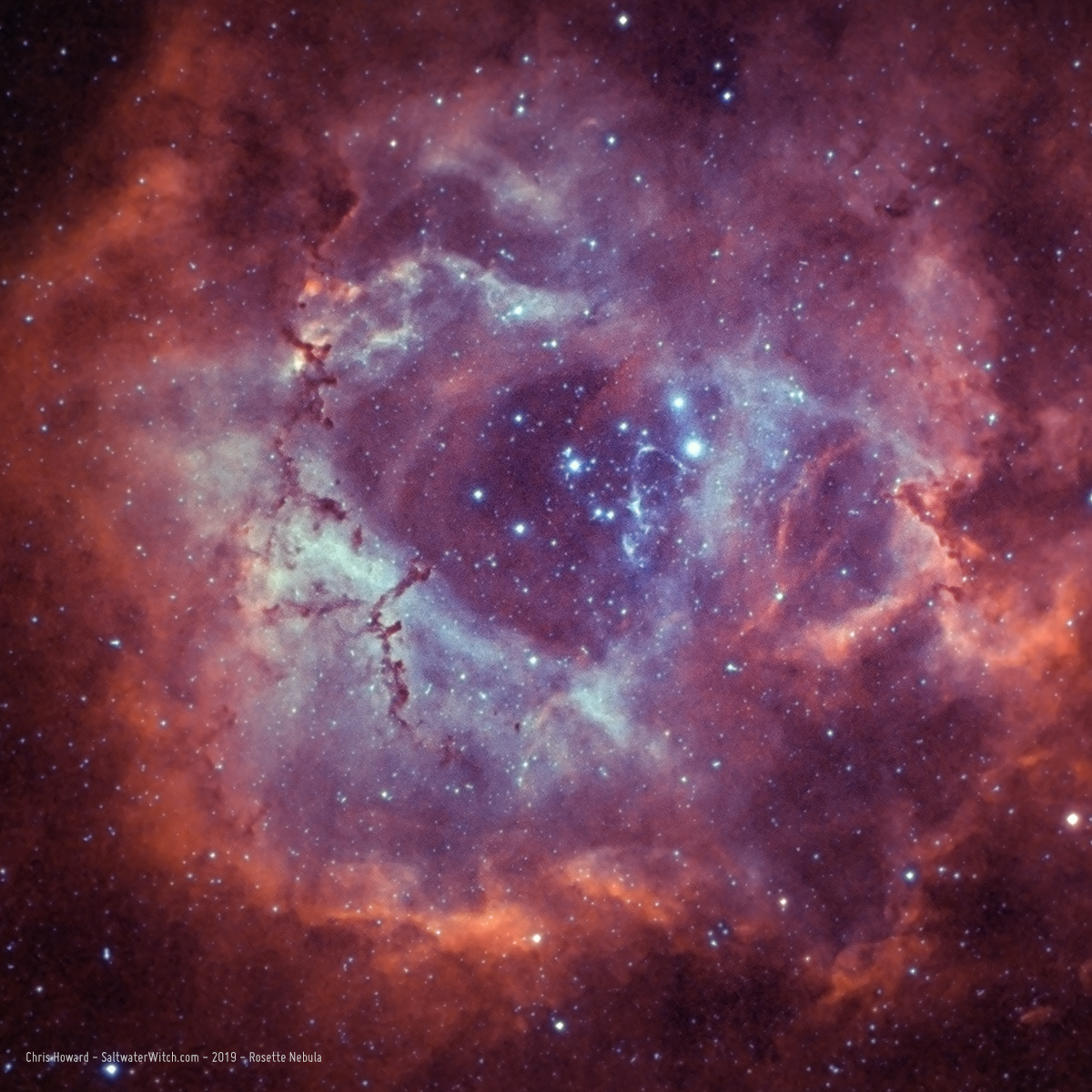
Posted June 27, 2019
More from Cygnus: Crescent and Tulip Nebulae
The Crescent Nebula, NGC 6888 (top right) is an emission nebula in the constellation Cygnus, about 5000 light-years away. Like most of this region around Cygnus, you can't do anything in hydrogen-alpha or sulfur2 without wading through clouds of the stuff—billowing, eddying, and general nebulousing. It's beautiful. There's a Wolf-Rayet star, WR 136, at the lower left edge of the Crescent Nebula (from this angle), and it's stirring up violent stellar winds and blazing quickly through its life; it's expected to go supernova in a couple hundred thousand years, and it's only a four or five million years old. WR stars are unusual: they're very bright--thousands of times brighter than our sun, and they burn much hotter, thousands of times hotter than almost all other stars. And they have very short lifespans.
Notes: 31 x 240 sec Ha, 33 x 240 sec OIII, 29 x 240 sec SII, Astronomik Ha, OIII, and SII filters, William Optics GT81 at f/4.7 with WO 0.8x Flat6A II, Moonlite focuser, ZWO ASI120MM OAG, Imaging camera: ZWO ASI1600MM Pro cooled mono on an iOptron CEM25P mount.
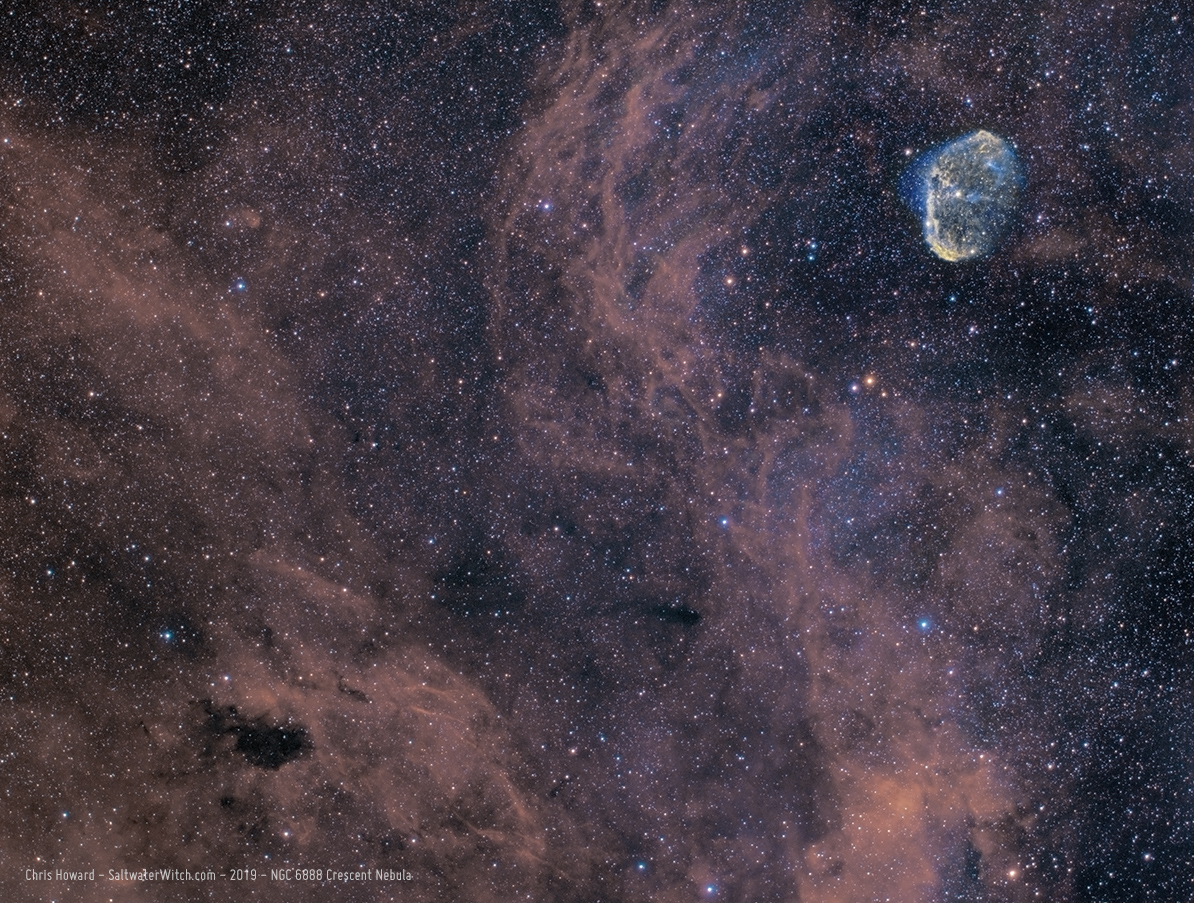
Sharpless 2-101, the Tulip Nebula (top left) is an emission nebula in Cygnus, about 6,000 light-years away. The microquasar Cygnus X-1 is the bright star just above the top point of the Tulip in this image. Cygnus X-1 is famous for being one of the first suspected blackholes, as well as a famous bet between physicists Stephen Hawking and Kip Thorne over that possibility. Hawking conceded to Thorne in 1990 as evidence for a blackhole mounted. Although the Tulip (Sh 2-101) stands out brightly with oxygen in blue, the whole region around the constellation Cygnus is cloudy with interstellar dust and gas. Notes: Astronomik Ha, OIII, and SII filters, William Optics GT81 at f/4.7, ZWO ASI1600MM Pro cooled mono camera, on an iOptron CEM25P mount.

Posted June 12, 2019
North America Nebula (NGC 7000) and the Pelican Nebula (IC 5070, IC 5067)
I spent most of last night's imaging run, about 5.5 hours, on this two-panel mosaic of NGC 7000, the North America Nebula and IC 5070, IC 5067 the Pelican Nebula. NGC7000 and this whole area is one of those deep sky objects with which you can do amazing things in narrowband or broadband color, and turns out beautifully in RGB, bi-color Ha and OIII, even Hydrogen-alpha by itself. For this shot I went with the Hubble Palette in SHO, mapping SII-Ha-OIII to RGB, Sulfur = Red, Hydrogen = Green, Oxygen = Blue. This is why you see aqua and gold standing out in many of the Hubble images. It also affects star color, and you end up with some shade of purple.

Here's an update with the two-panel mosaic of the North America Nebula (NGC 7000) and Pelican Nebula (IC 5070, IC 5068). I fixed the stars and toned down the whole image

Posted June 9, 2019
Horsehead Nebula (B33) and NGC 2023
The Horsehead Nebula (B33) and the emission/reflection nebula NGC 2023 (below and left of the Horsehead) in the constellation Orion. With this field of view, you're looking at around 1.7 trillion miles from one side to the other. I captured a batch of narrowband data in Orion last year. Today, I reprocessed some of it, playing with contrast and color balance.
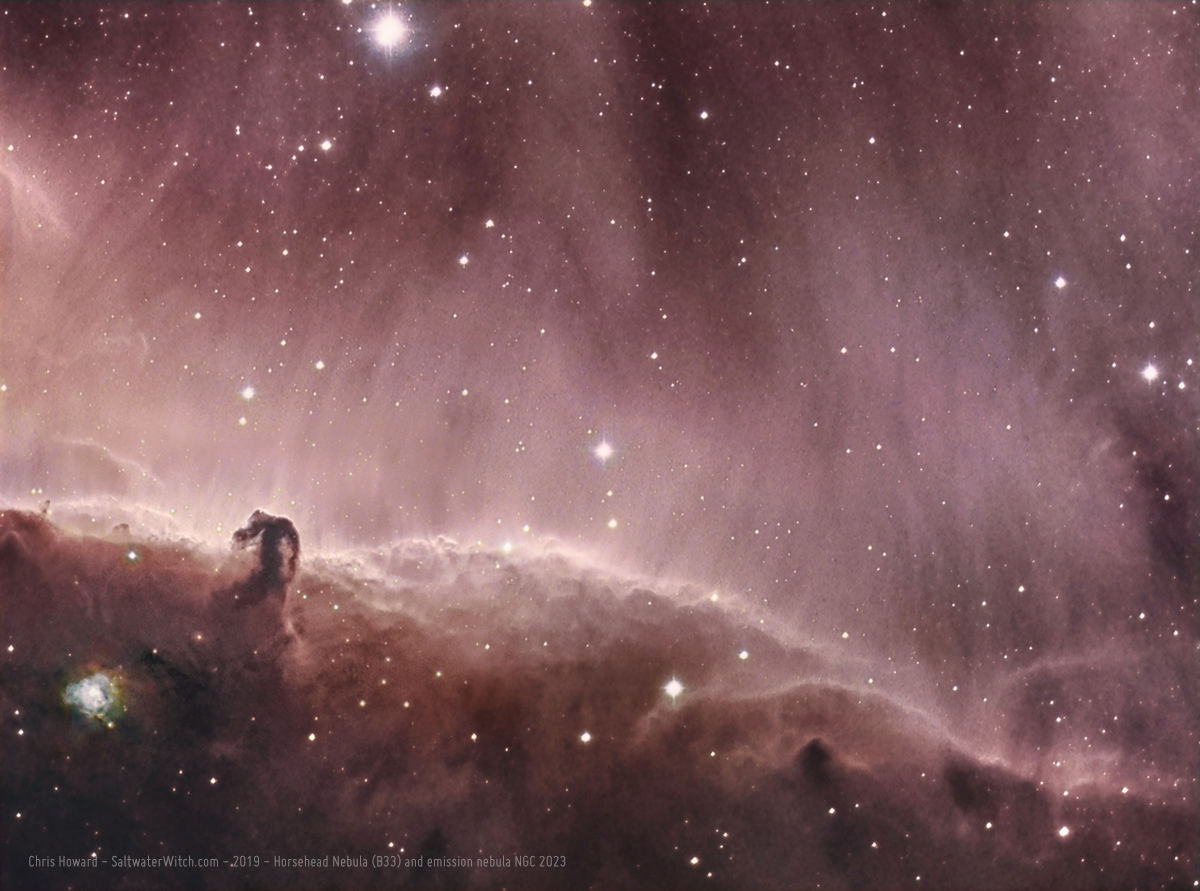
Posted June 1, 2019
Eagle Nebula - wide-field view with a side-order of infrared
Here's another one from last night's run, a wide-field view of the Eagle Nebula (M16, NGC6611) in IR-OIII-Ha with Ha luminance. From our perspective Messier 16--Eagle Nebula--sits just north of the Milky Way's dense core of stars, bands of clouds, dust, hydrogen, and other galactic detritus. I wasn't very hopeful with the IR subs, but the Ha subs were beautiful. The OIII frames were about what I expected--not too much but enough to include them. To brighten things up I went back and added the processed Ha stack as a luminance layer. Yes, this may be a spectacularly weird color arrangement, but we're working in false color imaging already, and this doesn't seem that far off from our galaxy's actual core colors--at least in terms of the bands of dust and ionized gases.
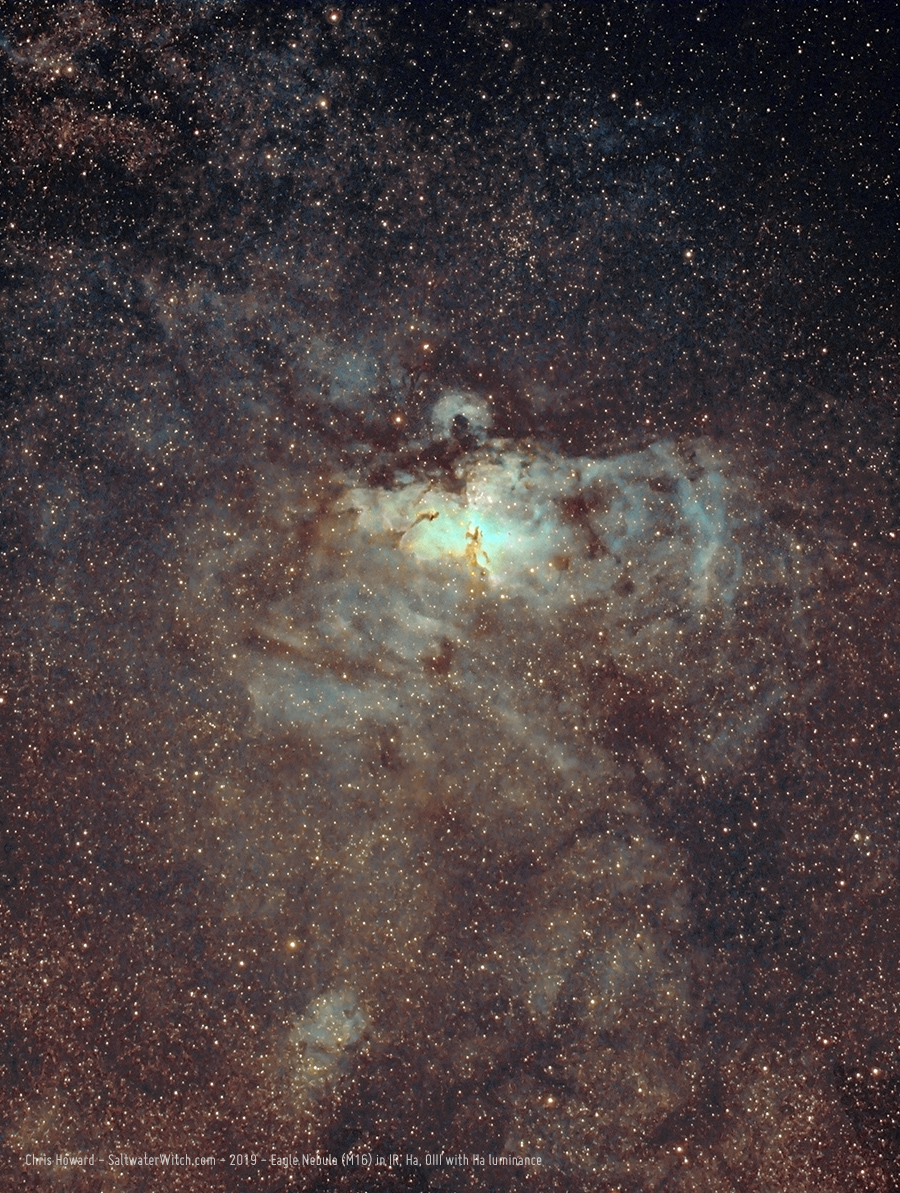
Here's the Ha stack:
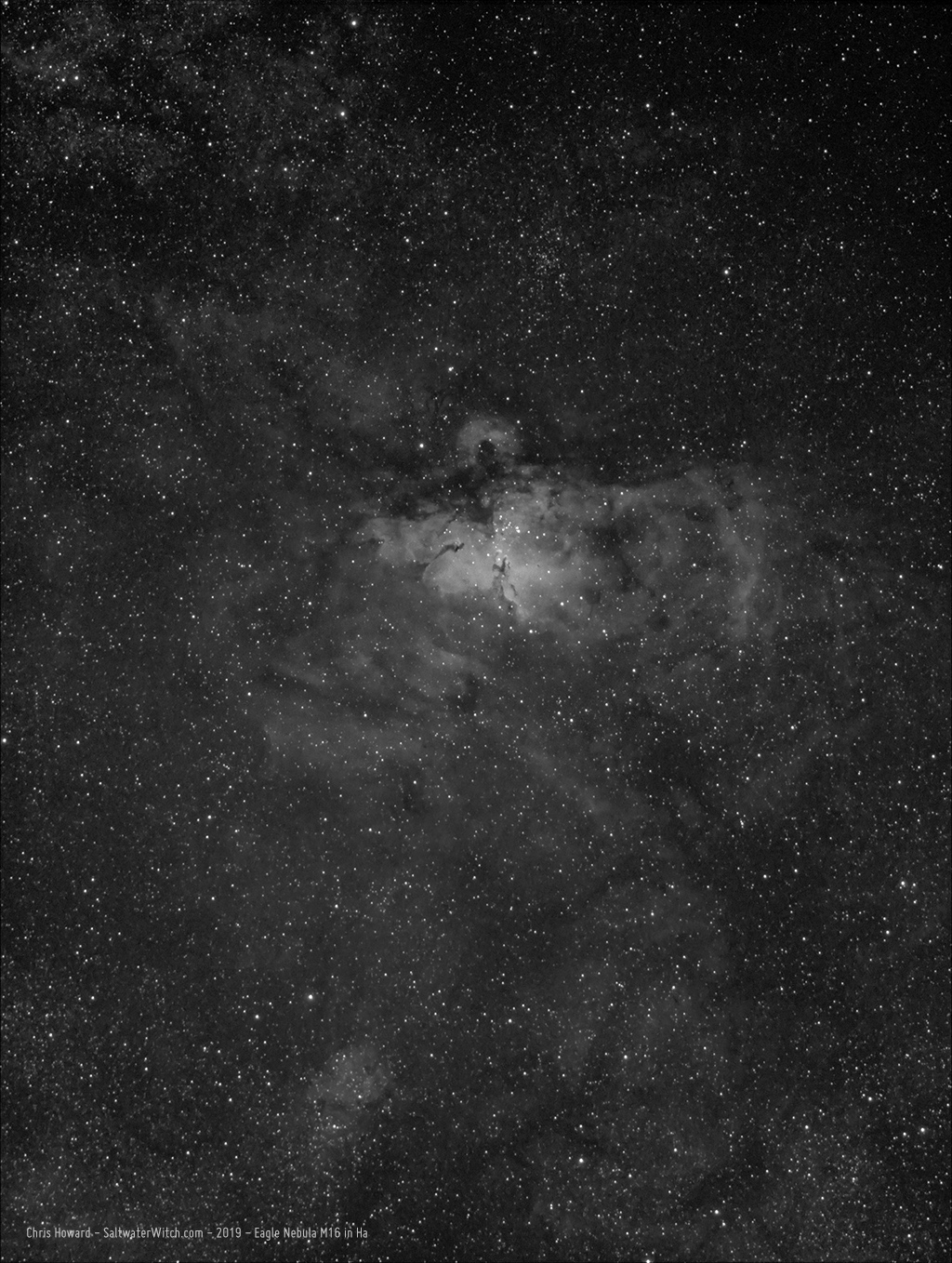
For comparison (with NGC 6611 above), here's the processed version of the Eagle Nebula (M16) I took last year with a slightly different setup--same William Optics scope + Atik414EX mono CCD camera. This is a bi-color hydrogen-alpha and oxygen3. With this one I think I had my OIII frames mapped to G and B channels, and Ha mapped to the Red channel.
